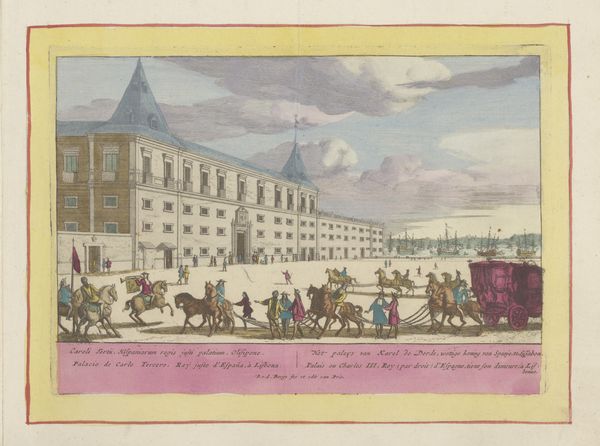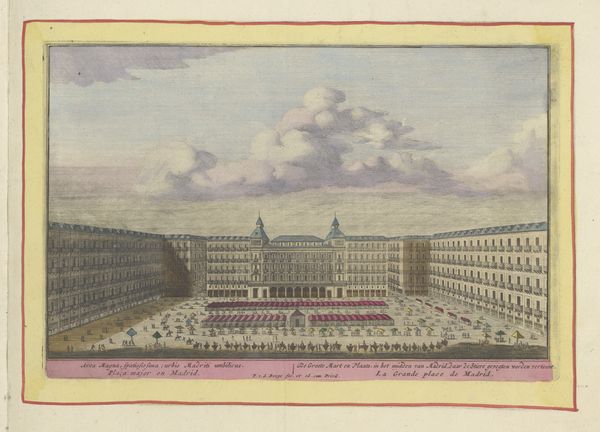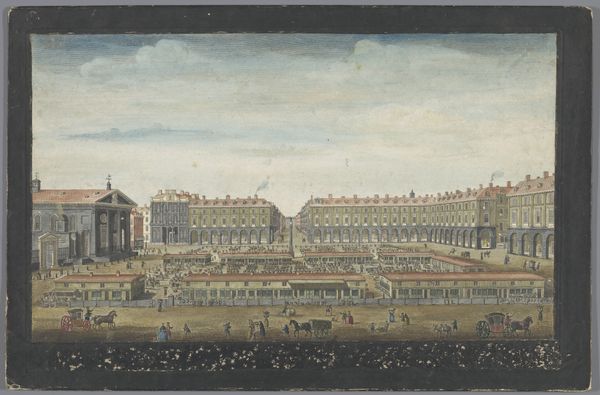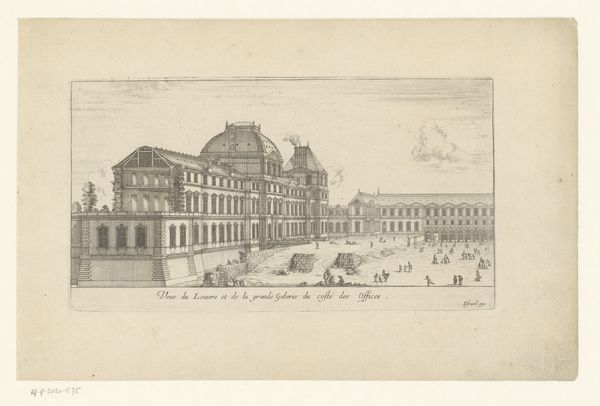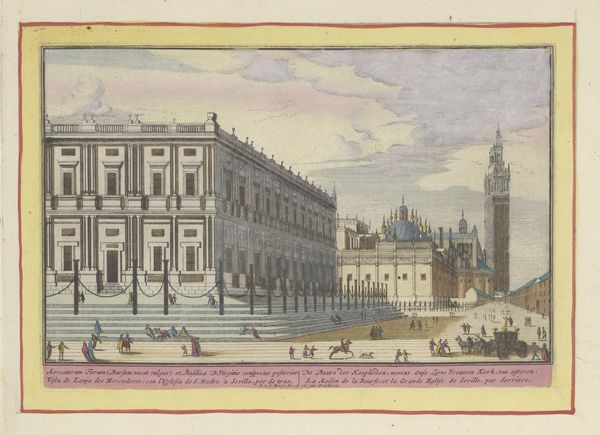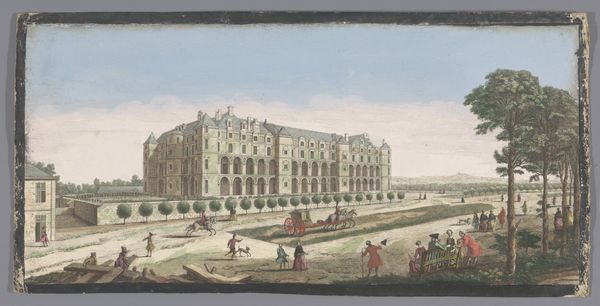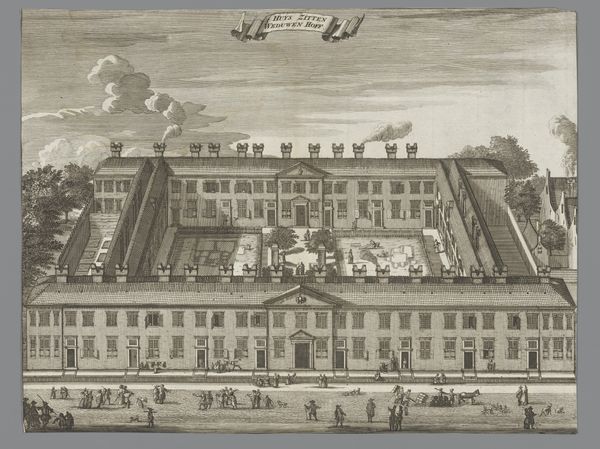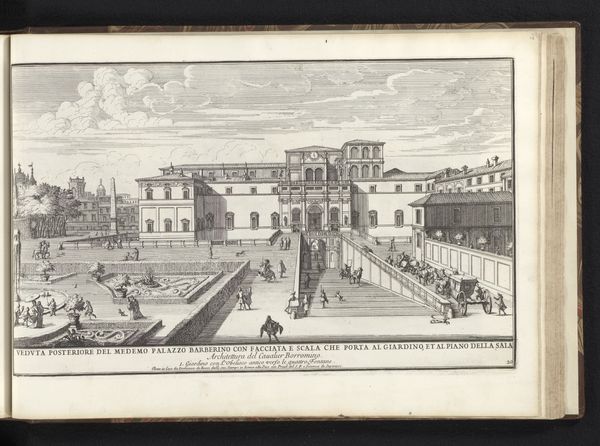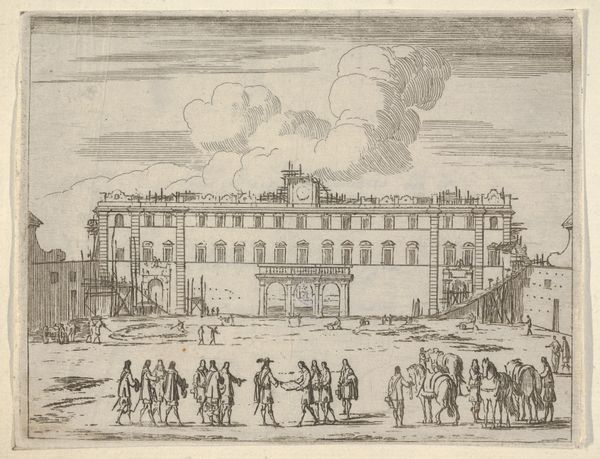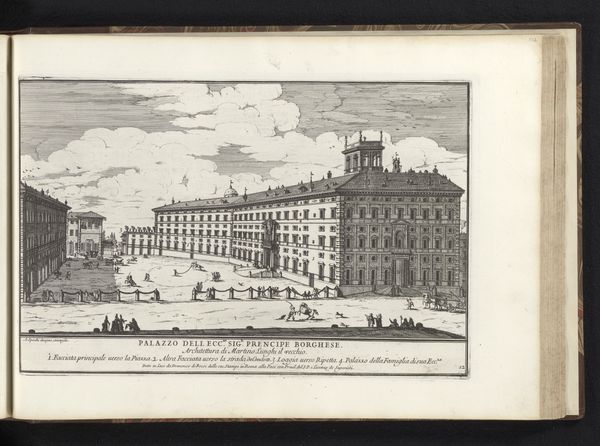
drawing, coloured-pencil, print
#
drawing
#
coloured-pencil
#
baroque
# print
#
coloured pencil
#
cityscape
#
history-painting
Dimensions: height 168 mm, width 256 mm
Copyright: Rijks Museum: Open Domain
This is Pieter van den Berge's rendering of the Royal Palace in Madrid, a colored etching made around the turn of the 18th century. As an etching, this work began with a metal plate, likely copper. The artist would have coated it with a waxy, acid-resistant ground, then used a sharp needle to scratch away lines, exposing the metal. Immersing the plate in acid would then bite away at these exposed lines, creating grooves. Finally, the plate is inked, the surface wiped clean, and the image transferred to paper under immense pressure. It’s important to consider this process as a kind of industrialized craft. While van den Berge was undoubtedly a skilled draftsman, the etching process allowed for the multiplication of his design. The coloring, likely applied by hand, would have added to the perception of value. This image, therefore, gives us a glimpse not just of a palace, but also the labor and techniques involved in disseminating such views to a wider public. It’s a reminder that even seemingly straightforward images are the result of complex social and economic forces.
Comments
No comments
Be the first to comment and join the conversation on the ultimate creative platform.
